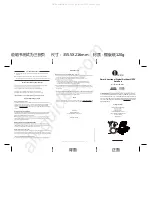
6012-71 Installation Manual
Site Survey
2-2
2.3.
Mounting Foundation
2.3.1.
While mounting the ADE on a mast is a common solution to elevate the ADE far enough above the various
obstructions which create signal blockages, sometimes the best mounting position is on a deck or deckhouse
top. These installations are inherently stiffer than a mast installation, if for no other reason than the design of
the deck/deckhouse structure is prescribed by the ship’s classification society. In the deck/deckhouse design
rules, the minimum plating and stiffener guidelines are chosen to preclude high local vibration amplitudes.
Mounting on Deck or Deckhouse
Most installations onto a deck or deckhouse structure will require a mounting pedestal to raise the ADE above
the deck for radome hatch access and to allow the full range of elevation (see ADE mounting considerations
above). Some care must be taken to ensure the mounting pedestal is properly aligned with the stiffeners
under the deck plating.
2.3.2.
Mounting the radome directly on the deck or platform
prevents access to the hatch in the base of the radome
unless an opening is designed into the mounting surface. If
there is no access to the hatch, the only way to service the
antenna is to remove the radome top. Two people are
required to take the top off of the radome without cracking
or losing control of it, but even with two people a gust of
wind may cause them to lose control and the radome top
may be catastrophically damaged (see repair information in
the radome specifications).
ADE Mounting Considerations
If access to the hatch cannot be provided in the mounting
surface, provide a short ADE support pedestal to mount the
ADE on which is tall enough to allow access into the radome
via the hatch.
Ladder rungs must be provided on all mounting stanchions
greater than 3-4 feet tall to allow footing for personnel
safety when entering the hatch of the radome.
The recommended cable passage in the 50, 60 and 66 inch
radomes is through the bottom center of the radome base,
down through the ADE support pedestal, through the deck
and into the interior of the ship.
2.3.3.
The following should be taken into account when choosing the height of a mounting support stand:
Sizing of the support pedestal
1.
The height of the pedestal should be kept as short as possible, taking into account recommendations
given in other Sea Tel Guidelines.
2.
The minimum height of the pedestal above a flat deck or platform to allow access into the radome
for maintenance should be 0.6 meters (24 inches).
3.
The connection of the ADE mounting plate to the stanchion and the connection of the pedestal to
the ship should be properly braced with triangular gussets (see graphic above). Care should be taken
to align the pedestal gussets to the ship’s stiffeners as much as possible. Doublers or other
reinforcing plates should be considered to distribute the forces when under-deck stiffeners are
inadequate.
4.
The diameter of the pedestal stanchion shall not be smaller than 100 millimeters (4 inches). Where
the ADE base diameter exceeds 1.5 meters (60 inches), additional stanchions (quantity greater than
3) should be placed rather than a single large stanchion.
5.
Shear and bending should be taken into account in sizing the ADE mounting plate and associated
gussets.
6.
Shear and bending must be taken into account when sizing the pedestal to ship connection.
7.
All welding should be full penetration welds –V-groove welds with additional fillet welds – with
throats equivalent to the thickness of the thinnest base material.
8.
For an ADE mounted greater than 0.6 meters (24 inches) above the ship’s structure, at least one (1)
Summary of Contents for 6012-71 C-BAND
Page 18: ...6012 71 Installation Manual Site Survey 2 8 This Page Intentionally Left Blank ...
Page 38: ...6012 71 Installation Manual Setup Ship s Gyro Compass 5 4 This Page Intentionally Left Blank ...
Page 48: ...6012 71 Installation Manual Setup Blockage Zones 8 2 This Page Intentionally Left Blank ...
Page 58: ...6012 71 Installation Manual Quick Start Operation 10 6 This Page Intentionally Left Blank ...
Page 72: ...6012 71 Installation Manual DRAWINGS 13 2 This Page Intentionally Left Blank ...
Page 77: ......
Page 78: ......
Page 79: ......
Page 90: ......
Page 92: ......
Page 93: ......
Page 94: ......
Page 100: ......
Page 101: ......













































